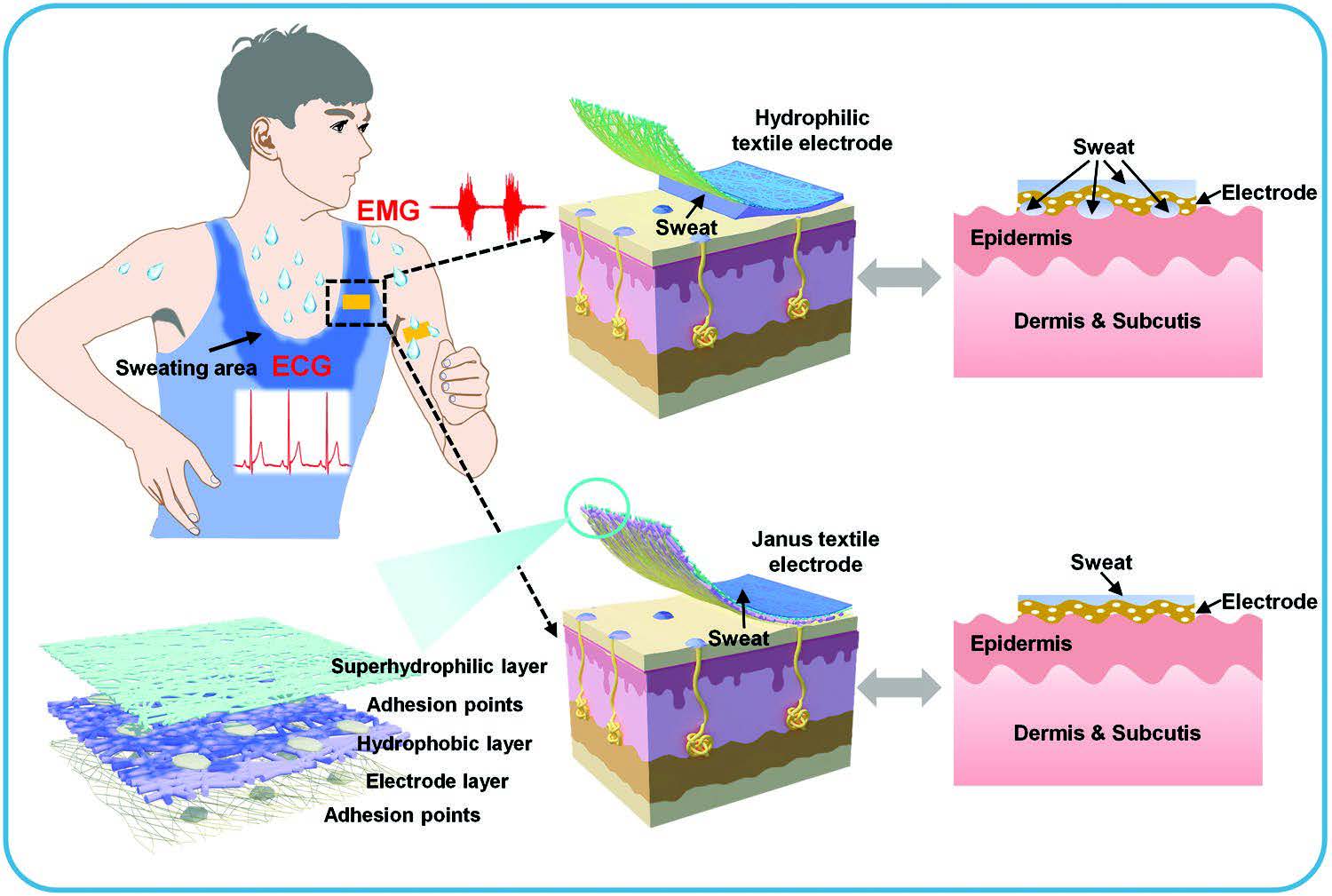文章专利

- 地址: 江苏省苏州市苏州工业园区若水路398号
- 邮箱: tzhang2009@sinano.ac.cn
- 电话: 86-512-62872706
- 传真: 0512-62603079
- 网址: http://nanosensor.sinano.ac.cn

All-Nanofiber-Based Janus Epidermal Electrode with Directional Sweat Permeability for Artifact-Free Biopotential Monitoring, Small, 2022, 2106477.
Xianqing Yang#; Shuqi Wang#; Mengyuan Liu; Lianhui Li; Yangyong Zhao; Yuanyuan Bai; Qifeng Lu; Zuoping Xiong; Simin Feng; Ting Zhang*;
ABSTRACT:
Epidermal electronics have been developed with gas/sweat permeability for long-term wearable electrophysiological monitoring. However, the state-of-the-art breathable epidermal electronics ignore the sweat accumulation and immersion at the skin/device interface, resulting in serious degradation of the interfacial conformality and adhesion, leading to signal artifacts with unstable and inaccurate biopotential measurements. Here, the authors present an all-nanofiber-based Janus epidermal electrode endowed with directional sweat transport properties for artifact-free biopotential monitoring. The designed Janus multilayered membrane (approximate to 15 mu m) of superhydrophilic-hydrolyzed-polyacrylonitrile (HPAN)/polyurethane (PU)/Ag nanowire (AgNW) can quickly (less than 5 s) drive sweat away from the skin/electrode interface while resisting its penetration in the reverse direction. Along with the medical adhesive (MA)-reinforced junction-nodes, the adhesion strength among the heterogeneous interfaces can be greatly enhanced for robust mechanical-electrical stability. Therefore, their measured on-body electromyography (EMG) and electrocardiography (ECG) signals are free of sweat artifacts with negligible degradation and baseline drift compared to commercial Ag/AgCl gel electrodes and hydrophilic textile electrodes. This work paves a way to design novel directional-sweat-permeable epidermal electronics that can be conformally attached under sweaty conditions for long-term biopotential monitoring and shows the potential to apply epidermal electronics to many challenging conditions.

Full Paper: https://onlinelibrary.wiley.com/doi/10.1002/smll.202106477
